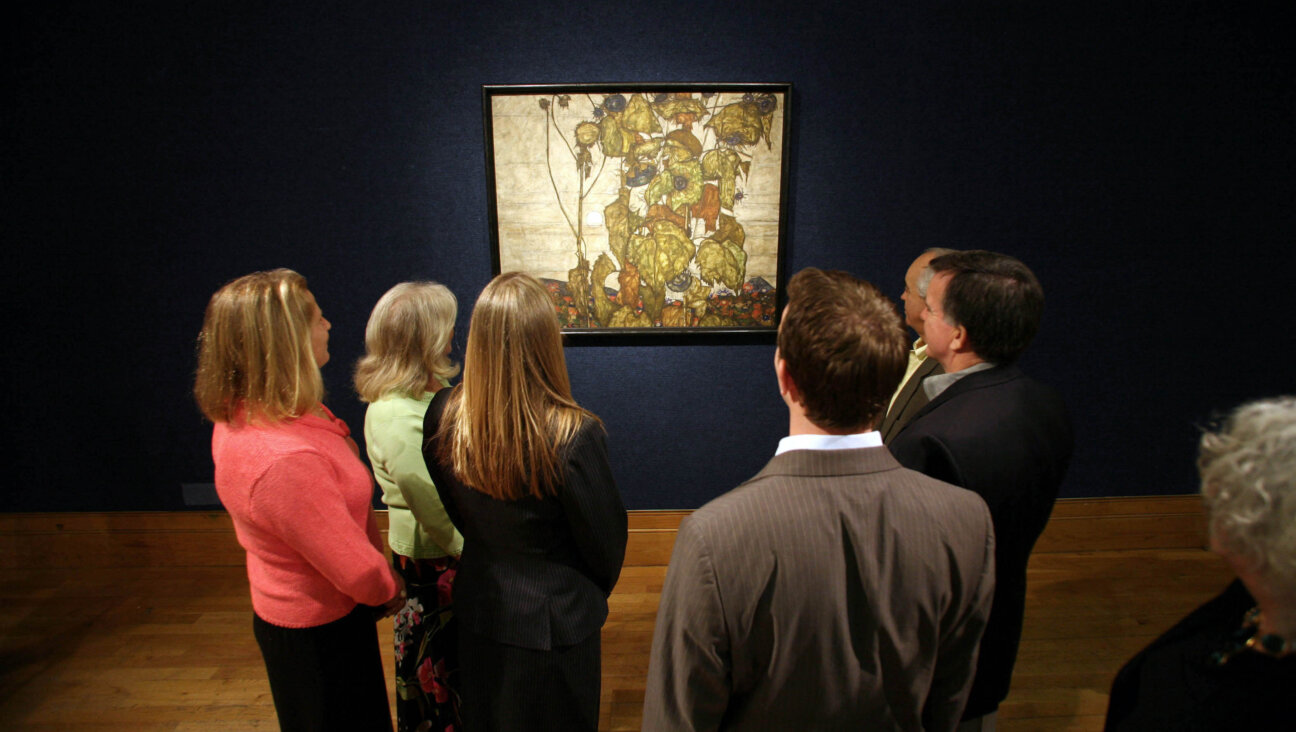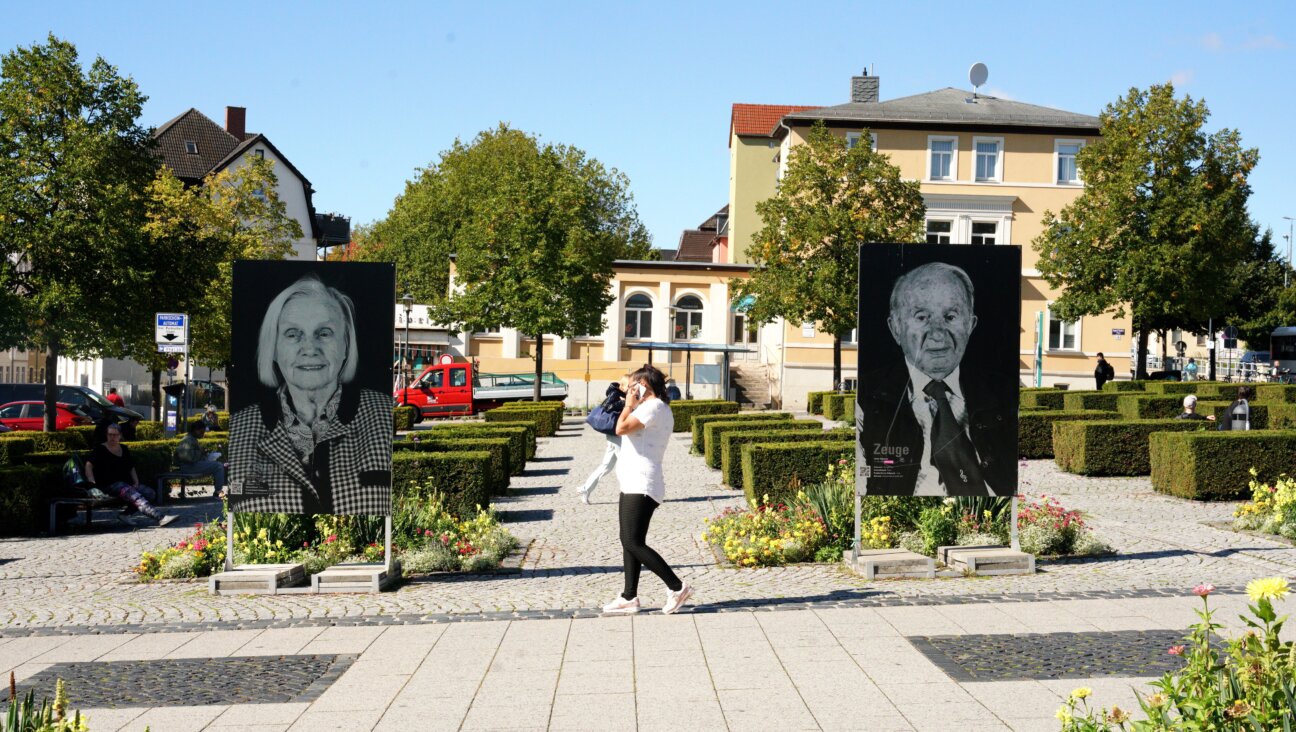Roz Chast Loves Everything About Manhattan — Even The Cockroaches

Graphic by Angelie Zaslavsky
As Roz Chast informs readers in her new book, “Going Into Town: A Love Letter To New York,” from Bloomsbury USA, grilled cheese is a blissfully safe food to eat in the gustatory wilds of Manhattan. That, and eggs: “YOU CANNOT GO TOO WRONG,” she writes.
The instruction’s uncontained maternal anxiety is charming; “Going Into Town” originated as a Manhattan guidebook for one of Chast’s suburban-raised, college-bound children. Equally delicious is the implicit refutation of the health-food crazes that occasionally appear to be overtaking the city. New York healthy is not green juice; it is grilled cheese.
Yet in a sign of how Manhattan has changed, when Chast and I took a stroll across the island on an August afternoon, we found our sandwiches — perfectly golden and oozing, served in white cardboard shells, as they should be — at Melt Shop, a grilled cheese chain that boasts varieties with truffle oil, arugula and maple-glazed bacon. We ordered classics, to Chast’s delight. “That looks perfect,” she said, opening a packet of ketchup. “I feel like I’m at the beach.”
A good grilled cheese can still be found in a corner diner, often known, in a quirk of New York lingo, as a coffee shop. But even the humble combination of bread, spread and Kraft slices has been altered by the city’s gentrification over the decades during which Chast, a longtime New Yorker cartoonist known for chronicling the travails and minor triumphs of the anxious, has observed it.
Chast first fell in love with Manhattan in the late 1970s, moving to the island after graduating with a degree in painting from Rhode Island School of Design.
As the child of a woman who also moved to Manhattan after college and found herself enchanted with its myriad eccentricities, I’ve often found myself nostalgic for a city I never knew. Yet Chast, who has seen Manhattan pass through all the decades I romanticize, sees a great deal of charm in the city as it is. Not just the outlandishly garbed residents and stores so swarmed with bolts of fabric as to be nigh unnavigable, not just the ready availability of grilled cheese and the perpetual promise of the undiscovered, but also, as chronicled in “Going Into Town,” the small and often gross things that are so New York they escape longtime residents’ notice: The pattern of fossilized gum on the sidewalks, the water bug taking a saunter down 14th Street, the partially declawed pigeon convinced that the sidewalk on which you are attempting to walk belongs, by right, to it.

Image by Copyright 2017 Roz Chast/Reprinted by permission of Bloomsbury
Hence, there is “Going Into Town,” the kind of love letter that could be penned only by someone who knows New York intimately enough to have as much patience for it as love. In one of the book’s more entertaining anecdotes, Chast remembers the time she found a brand-new, carefully protected chef’s knife on a sidewalk; she put it in her purse, forgot about it and then accidentally tried to take it into the Empire State Building, a mistake that led to an awkward interaction with a security guard. Drawn and narrated in the frenetic, emotionally exaggerated, whimsical style that is Chast’s trademark, the story is about the wonders of a very strange city. For someone lacking Chast’s particular love for New York, the story of the chef’s knife could have become a tale of random danger or annoying bureaucracy. But for Chast it becomes a story about a deeply pleasurable, mysterious order. “Out of the ether it came, and back into the ether it went,” she writes in “Going Into Town.”
Before finding our grilled cheese, while we walked east on 24th Street from the Hudson River and wondered what the water towers clustered on the roofs to our left might be gossiping about with each other, I asked Chast if she’s always been so observant.
“Yeah, yeah,” she said. “I remember growing up in Brooklyn, and somebody had put their laundry out on a line. I was with my mother, and I said, ‘Isn’t that beautiful?’”
*
Chast grew up as an only child in Midwood. Her parents, both the children of Russian Jewish immigrants, were intensely frugal children of the Depression, although they weren’t immune to the lure of a treat. In “Going Into Town,” she remembers trips to Manhattan to see musicals, including a black-and-white photograph of her young self standing somewhat resentfully in front of a billboard for “Man of La Mancha.”

Roz Chast in Chelsea. Image by Talya Zax
As she portrays herself in cartoons, Chast possesses a yellow wedge of hair, forever hunched shoulders and a remarkably malleable face, a combination well-suited to convey a sense of perpetual emotional disarray. In person she’s notably put together. On the day of our walk she wore a gray knit dress and silver jewelry, and was warm and eager to talk. But she’s still recognizable; she has a habit, for instance, of making up tiny impromptu songs about phrases or ideas that catch her interest.
“I knew deep down I wasn’t going to be a painter,” she said, recalling her senior year at RISD. “When I left school I went back to my parents’ apartment in Brooklyn. I just drew and drew and drew.”
“At first I took around an illustration portfolio, because, I thought, ‘Nobody will buy my cartoons; they’re very weird.’ That was very unsuccessful.”
When she decided to show her cartoons, she wasn’t aiming for The New Yorker. “I thought, if I were very lucky, I would wind up doing cartoons for the Village Voice, because Jules Feiffer, Stan Mack — people who seemed to have their own voice — I related more to them than I related to the cartoons in The New Yorker,” she said.
Still, she dropped off her portfolio at The New Yorker’s offices, which, in those days, was how it was done. When she returned to pick it up the next week, Lee Lorenz, who then was the magazine’s art editor, had left her a note asking her to meet with him. And so Chast sold her first cartoon to The New Yorker in 1978, when she was 23.
There she has stayed, although she has also branched out, publishing in other outlets and writing and illustrating several books. Her 2014 memoir, “Can’t We Talk About Something More Pleasant?” won the National Book Critics Circle Award for autobiography and was a finalist for the National Book Award for Nonfiction. While that book’s subject — the issue of discussing death with her aging parents — was sobering, in her other work Chast has taken a quiet glee in lampooning the publishing industry. It’s hard not to see a dig at academics in the title “Theories of Everything: Selected, Collected, Health-Inspected,” or a wink to the relentless enthusiasm of how-to manuals in “What I Hate: From A to Z.”
As an undergraduate she may have felt that cartooning didn’t receive much respect as an artistic discipline; her own career has helped alter that attitude. She returned to RISD to deliver a prominent annual lecture in 2003, holds honorary doctorates from three universities, and was presented with the 2012 New York City Literary Award for Humor. She was inducted into the American Academy of Arts and Sciences the following year.
This, despite lingering questions about her own artistic abilities. “There are people who really can draw,” she told me. “There are certain things I can draw, and some things it’s just impossible. I’m not bad at drawing people’s expressions; I’m terrible at drawing perspective.”
What she’s sure of, in her work, is character. “I always think that style is a lot like handwriting,” she said. “Some of it is your own voice, and some of it is what you’ve cobbled together. I think it’s stealing, and taking from others.”

Image by Roz Chast
To demonstrate, Chast drew two pairs of feet on my notepad. The first pair, drawn in the style she used as a child, stuck out at right angles to the legs to which they were attached. The second pair showed the method she had learned from a first-grade classmate who had figured out how to draw feet pointing forward. Chast hummed as she worked.
In her early years at The New Yorker, Chast met her eventual husband, the writer Bill Franzen, who was working as an in-office messenger. The couple lived in Manhattan until 1987, when they had their first child and moved to Brooklyn’s Park Slope. When Chast was pregnant with their second child, they moved to a suburb north of the city, where they still live — with two parrots — although Chast now keeps an apartment on the Upper West Side for Manhattan excursions.
“I missed it like every day, pretty much,” she said.
Having finished her love letter to the New York borough she chose, she’s now turning her attention to the one in which she was born, and writing a book about Brooklyn.
“I don’t really know Brooklyn, that’s the thing,” she said. “I left when I was 16. I knew my neighborhood, sort of, and I know Park Slope, sort of. But Brooklyn is so big. I want to explore neighborhoods. Not like Williamsburg or something, more like Mill Basin. These outlying areas — Gerritsen Beach, Dyker Heights, Gravesend.”
She spoke of these places, most of which she’d seen only on a map, with relish. We paused to peer in at a tiny, narrow fabric shop, its offerings spilling out onto the sidewalk. “I’m really glad we picked this street. It just has more stuff on it,” she told me.
*
If you are Roz Chast, and you are walking through Manhattan, here are some of the things you are likely to notice: The storefront for the brass polishers union, a building with especially handsome fire escapes, a school window displaying children’s attempts to pay tribute to the postal service, and a Chelsea corner inhabited by the four most innocently familial street-level water pipes, known as standpipes, that one could imagine, curved like candy canes and arranged left-to-right, biggest-to-littlest.

Image by Copyright 2017 Roz Chast/Reprinted by permission of Bloomsbury
If you are a journalist tagging along with Chast as she explores New York, you may find traces of the island to which she was introduced in the 1970s. In typical New York fashion, they will likely be tragic or downright annoying, but also lovable. On a street you’ve walked down multiple times, you’ll see an abandoned quilt store that you never previously noticed or mourned. Despite the proliferation of chain eateries, idiosyncratic bakeries specializing in highly decorated, generally flavorless-looking cakes still, proudly, have a home. Shiny new apartment complexes and urban farms may have cropped up on the banks of the East River, but the pedestrian’s frustration at being unable to reach that river due to Robert Moses’s FDR Drive remains the same.
“I’m not nostalgic for the grittier, ‘Taxi Driver’ incarnation of New York of the ’70s and ’80s,” Chast writes in “Going Into Town.” “I don’t miss the muggings, the shootings, the dog poop everywhere, not wanting to use the public restroom at Grand Central, the heroin, the graffiti (the ‘fuck you’ kind, not the ‘cool’ kind), AIDS, etc. I do miss the cheaper rents.”
At the end of our walk we found a football field-sized, marshlike empty lot by the United Nations, hidden from civilian eyes by a wire fence draped with a rough black material. Some adventurous citizens had attempted to cut out eyeholes, and we peered through at the sodden ground, which hosted a few construction workers on a late-afternoon break.
It was a rare, un-Chastian view of Manhattan, a dearth rather than an excess of visual information. But despite the heat, the long walk and the imminent prospect of a return to the stuffy tunnels of the subway — all things that might make the stereotypically cynical Manhattanite, so adored by pop culture, groan and kvetch — Chast was thrilled.
“I feel like I’m seeing something I shouldn’t be seeing,” she said. “Something is going to happen here, but I don’t know what.”

















